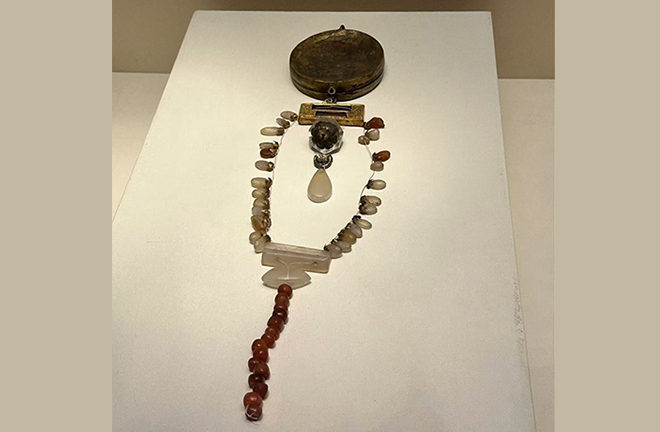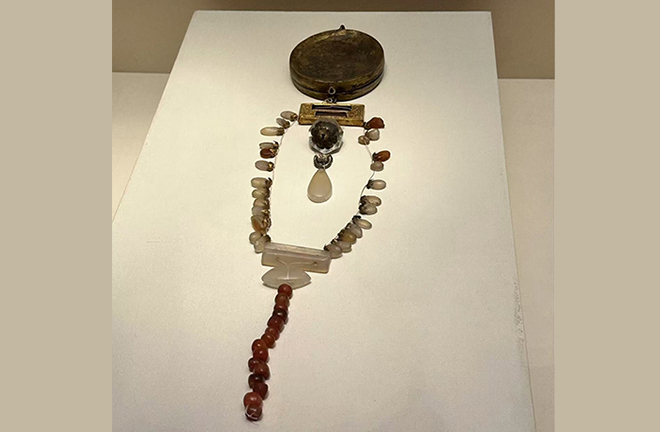Ethnic exchanges in Liao, Western Xia, Jin and Yuan eras


A gilded silver waist ornament from the Jin Dynasty, a luxury of Jurchen nobles, unearthed at Suibin, Heilongjiang Province Photo: Ren Guanhong/CSST
The Liao (916–1125), Western Xia (1038–1227), Jin (1115–1234), and Yuan (1271–1368) dynasties, established by ethnic minority groups like the Khitan, Tangut, Jurchen, and Mongols, ruled parts of ancient China for over four centuries. This era significantly influenced the expansion of China’s territory and fostered extensive exchange and integration among diverse ethnic groups.
Ethnic integration in writings
The languages and scripts developed during the Liao, Western Xia, Jin, and Yuan dynasties were deeply connected to Han Chinese characters. The Khitan writing system, for example, consisted of both “large” and “small” characters. The large characters were based on a modified form of the Han clerical script, while the small characters were a phonetic script that used symbols resembling the radicals of Han Chinese characters to represent the phonemes of the Khitan vocabulary.
After the establishment of the Western Xia, its ruler Li Yuanhao ordered his minister Yeli Renrong to create the Western Xia script, which was a new square script modeled after the strokes of Han Chinese characters. Wanyan Aguda, founder of the Jurchen-led Jin Dynasty, commissioned his Chancellor to develop their own writing system, stating that the Jurchen writing script should follow the structure of Han Chinese characters and incorporate the Khitan script.
During the Yuan Dynasty, with awareness that various ethnic groups spoke multiple languages under his reign, Kublai Khan sought to create a new script that could “translate all writing systems.” Under this vision, he commissioned the Imperial Preceptor, Drogon Chogyal Phagpa, to develop what became known as the Phags-pa script. This new script was primarily based on Tibetan letters, while also referencing Mongolian and Han Chinese phonetics. The Khitan scripts, Western Xia script, and Jurchen script were more heavily influenced by Han Chinese characters, whereas the Phags-pa script emerged from a combination of Tibetan, Mongolian, and Han Chinese linguistic elements.
Thus, the writing system of these ethnic dynasties arose from a blend of multiple ethnic languages, designed for common use among various ethnic groups. The surviving written records from these ethnic groups often reflect multiple cultural achievements, including Confucian classics, Buddhist and Taoist texts, and historical records of ethnic minorities.
Diverse ethnic fusion
The Liao, Western Xia, Jin, and Yuan dynasties shared similar religious policies, characterized by a relatively open attitude toward various faiths. Islam and Nestorian Christianity were particularly prevalent during the Liao and Jin eras. The Yuan treated all religions equally, with Genghis Khan and Kublai Khan adopting a liberal stance towards diverse beliefs. This openness contributed to a more tolerant environment for religious practices, with Buddhism and Taoism alongside Islam, Christianity, Judaism, Manichaeism, Shaivism, and Shamanism gaining popularity during the Yuan period.
The Liao, Western Xia, Jin, and Yuan dynasties, founded by minority ethnic groups, saw these ruling minorities implement policies that sometimes favored their own ethnicities, particularly in the Jin and Yuan dynasties. Consequently, other ethnic groups often aspired to align themselves with the ruling ethnicities, adopting their languages and cultures, and even their identities. For instance, after the Jin conquered the Northern Song, the Song people began learning Jurchen to adapt to the new regime. In Fujian during the Yuan era, popular local bookstores published the Shilin Guangji, an encyclopedia featuring the Hundreds of Chinese Surnames in Phags-pa script and a Mongolian-Chinese bilingual dictionary, highlighting the enthusiasm of scholars in southern China to learn Mongolian.
Through extensive interaction, exchange, and integration among different ethnicities, the Yuan Dynasty saw significant shifts in its ethnic composition. Mongols and other ethnic groups spread beyond northern China into regions formerly governed by the Southern Song, motivated by roles in military service, trade, official positions, education, and other reasons. Many settled in these regions and cohabited with the local Han population, resulting in a situation where “many people from the western regions served in the central court, studied the Southern Song culture, and gradually forgot their ethnic differences in daily pleasure.” The Zhishun Zhenjiang Zhi, a work by a Yuan scholar, documented this ethnic mingling in the Zhenjiang area [in present day Jiangsu], recording a diverse population of Han residents, alongside Mongol, Uighur, Hui, Yelikewen [the general term used for various Christian denominations during the Yuan Dynasty], Tangut, Khitan, Jurchen, and other ethnic groups.
Chen Guang’en is a professor from the Institute of Chinese Cultural and Historical Document at Jinan University.
Edited by REN GUANHONG

 PRINT
PRINT CLOSE
CLOSE